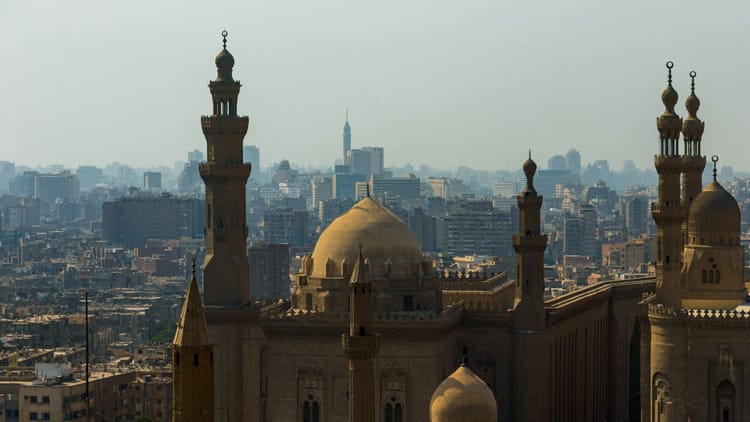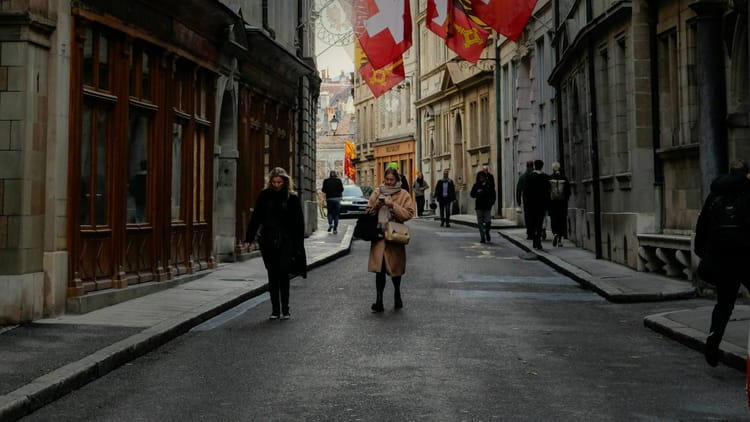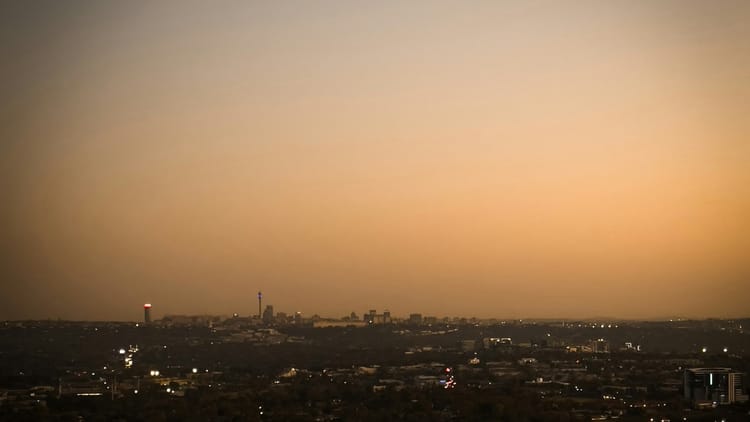The tower goes dark

Recently: What’s so special about the Chinese tech multinational Huawei? Eva Dou’s House of Huawei: Inside the Secret World of China’s Most Powerful Company.
Today: What do you get when critical infrastructure depends on impossible schedules and missing paychecks? Hollywood Burbank Airport had zero controllers for five hours on Monday; Nashville imposed a ground stop on Tuesday; and a week into the U.S.-government shutdown, the American air-traffic system is depending on whoever can show up.
+ For members: Why does Japan have a new prime minister—again? Tobias S. Harris on political scandals, economic struggles, and a deep loss of public confidence in Japanese institutions.
& New music From William Tyler and Kieran Hebden ...
Developments
- The first phase, at least. Israel and Hamas agreed to the first phase of a peace deal to halt fighting in Gaza, U.S. President Donald Trump announced Wednesday night. All hostages—48 remain in Gaza, roughly 20 believed alive—are expected to be released starting Monday, while Israeli forces withdraw to agreed positions. The Israeli cabinet votes today. Trump’s 20-point proposal calls for Hamas to disarm and cede governance to a “technocratic” Palestinian committee overseen by a “Board of Peace” that Trump would chair.
- Essential, unpaid, under pressure. Air-traffic controllers working without pay during the U.S. government shutdown began calling in sick at rates high enough to ground flights. Hollywood Burbank Airport operated with zero controllers for five hours on Monday evening. Nashville, Denver, Dallas, and Chicago experienced delays on Tuesday. The roughly 13,000 controllers are classified as essential workers—required to work during shutdowns but unpaid until the government reopens. Transportation Secretary Sean Duffy acknowledged controllers already working 60-hour weeks at understaffed facilities now face pressure over mortgages and bills. The National Air Traffic Controllers Association warned that even small sick-call increases expose the system’s fragility.
- Gazprom’s grip tightens. American sanctions on Naftna Industrija Srbije—Serbia’s Russian-majority-owned oil company—took effect Thursday after the United States Treasury declined to extend a waiver for the eighth time. NIS, 45 percent owned by Russia’s Gazprom Neft, operates Serbia’s sole refinery and over 300 gas stations. Croatian pipeline operator JANAF immediately halted crude deliveries, while card payments stopped at NIS stations. Serbian President Aleksandar Vučić warned of “unforeseeable consequences” and said Belgrade would discuss the matter with Moscow—“we have nothing left to discuss with the Americans. Serbia has refused Western sanctions against Russia despite seeking European Union membership.
- Ambush near the Afghan border. Pakistani Taliban fighters killed 11 soldiers, including two officers, in an ambush on Wednesday on a military convoy in Orakzai district near Afghanistan. The attack involved a roadside bomb followed by gunfire during an intelligence operation. The military said 19 fighters also died in the clash. The Pakistani Taliban—officially Tehreek-e-Taliban Pakistan—has intensified attacks since the Afghan Taliban returned to power in Kabul in 2021. Pakistan accuses Afghanistan of sheltering the group, which seeks to overthrow the Pakistani government. The military refers to attackers as “Khwarij” and alleges Indian backing, though without evidence.
- From beyond the boundary. A spacecraft orbiting Mars captured rare images of an interstellar comet—only the third confirmed object from outside the solar system. The European Space Agency’s ExoMars Trace Gas Orbiter photographed comet 3I/ATLAS on Friday as it passed Mars, showing the nucleus of ice, rock, and dust surrounded by glowing gas. Astronomers detected the object in July and have tracked its path through the inner solar system. The comet reaches its closest approach to the sun around October 30, remaining roughly 270 million kilometers from Earth. The first two confirmed interstellar objects were ‘Oumuamua in 2017 and comet Borisov in 2019.

Burbank after dark
Hollywood Burbank Airport went dark Monday evening. For five hours, from 4:15 to 10 p.m., the control tower operated with zero air traffic controllers. Pilots departing Burbank—which serves the Los Angeles area—had to contact Southern California TRACON in San Diego for clearance. Flights stacked up. The airport logged 56 delays and 12 cancellations. By Tuesday, Nashville International Airport had imposed a temporary ground stop. Dallas and Chicago averaged delays of 30 to 40 minutes. A dozen Federal Aviation Administration facilities reported controller shortages Monday, followed by roughly six more Tuesday.
The immediate cause is straightforward: air-traffic controllers, classified as essential workers during the American government shutdown, are working without pay while bills come due. Transportation Secretary Sean Duffy acknowledged the obvious pressure at a Monday press conference. Controllers aren’t just managing airspace, he said; they’re thinking about mortgages, car payments, whether they need to drive for Uber at night. The National Air Traffic Controllers Association has seen what it calls “a slight tick up” in sick calls since the shutdown began on October 1. Even that modest increase proved enough to expose the system’s fragility. Controllers already work 60-hour weeks, often six days straight with only four days off per month, at facilities that have been understaffed for years. The FAA has flagged more facilities for low staffing than at any point since summer 2022, when post-pandemic travel surges caused widespread chaos. Add financial stress to chronic understaffing and the system operates so close to capacity that a few sick calls shut down major airports.
The question isn’t whether controllers will keep showing up. The union has explicitly told members that participating in coordinated absences is illegal and could result in termination. Most will continue working. The question is what it means that critical safety systems depend on people enduring impossible schedules without knowing when they’ll be paid, in a country where driving for a ride-sharing service at night after a 10-hour shift managing aircraft becomes a plausible option. Duffy said the FAA will slow or halt traffic before risking lives—a reasonable position that guarantees more delays as the shutdown continues. The air-traffic control system has operated for years close to what officials call the edge of collapse. This, now, would be the edge itself.
Wary of fast fashion?
Shop Congo Clothing Company and
make a difference—in style.

From the files
Next to swing
Why does Japan have a new prime minister—again? Tobias S. Harris on political scandals, economic struggles, and a deep loss of public confidence in Japanese institutions.
Japan is about to get its third prime minister in 13 months. On October 4, the ruling Liberal Democratic Party chose Sanae Takaichi, an ultra-conservative protégé of the late former prime minister Shinzo Abe, as the party’s new leader. The National Diet, the country’s legislature, will vote later this month to confirm her as the country’s first female prime minister.
She’ll succeed Shigeru Ishiba, who only came to power in October 2024. He resigned last month, saying he would take responsibility for the party’s poor performance in July’s elections for half of the House of Councilors, the Diet’s upper house. After that vote, the LDP and its smaller governing partner, the Komeito party, lost their majority there—the less powerful of the Diet’s two chambers.
The July vote followed the LDP’s even steeper losses in last October’s general elections, when the LDP lost 68 of its 259 seats in the lower house, the House of Representatives. The LDP-Komeito coalition now holds just 220 of the lower house’s 465 seats. Last year’s election marked only the third time in 55 years the LDP failed to win a majority, and voters have continued to turn against the longtime ruling party. Ishiba’s approval ratings, for example, are now under 30 percent.
What’s going on in Japanese politics?
As Tobias J. Harris says here in The Signal, the problems in Japan look a lot like those in many other democracies worldwide. Inflation, for instance, is higher than in recent years. But there’s a deeper discontent, too: Japanese people have lost trust in institutions, whether the longtime ruling LDP or the formerly cherished state bureaucracy.
Yet the political response in Japan departs from the more general global pattern in one major way: The vast majority of voters aren’t interested in a populist alternative—yet. Sanseitō, an anti-immigrant party whose leader, Sohei Kamiya, calls it Japan’s version of Trumpism, received only about 12.6 percent of the vote in July’s low-turnout elections for the House of Councilors. And that result—the party’s best showing yet—comes after an LDP financing scandal last fall and with the country’s public debt now about 235 percent of its GDP.
Japanese voters brought a semi-populist party, the Democratic Party of Japan, to power from 2009 to 2012—but its failures brought about a loss of faith so profound that now, Harris says, few voters think even populists could fix things …
Your loyal guide to a changing world.
Membership with The Signal means exclusive access to premium benefits:
- Regular profiles on the questions behind the headlines
- In-depth feature interviews with our network of specialist contributors from across America and around the world
- The despatch, our weekly current-affairs and cultural-intelligence briefing
- Early access to new products, including print extras
It also means vital support for an independent new enterprise in current-affairs journalism.
‘Timber’
The Nashville guitarist William Tyler and Kieran Hebden—a.k.a. Four Tet—have a new album, 41 Longfield Street Late ‘80s. Layers and layers of finger-style guitar, with electronic touches overlaid. It’s fantastically pretty with none of what anyone who knew these artists might expect from either of them.





